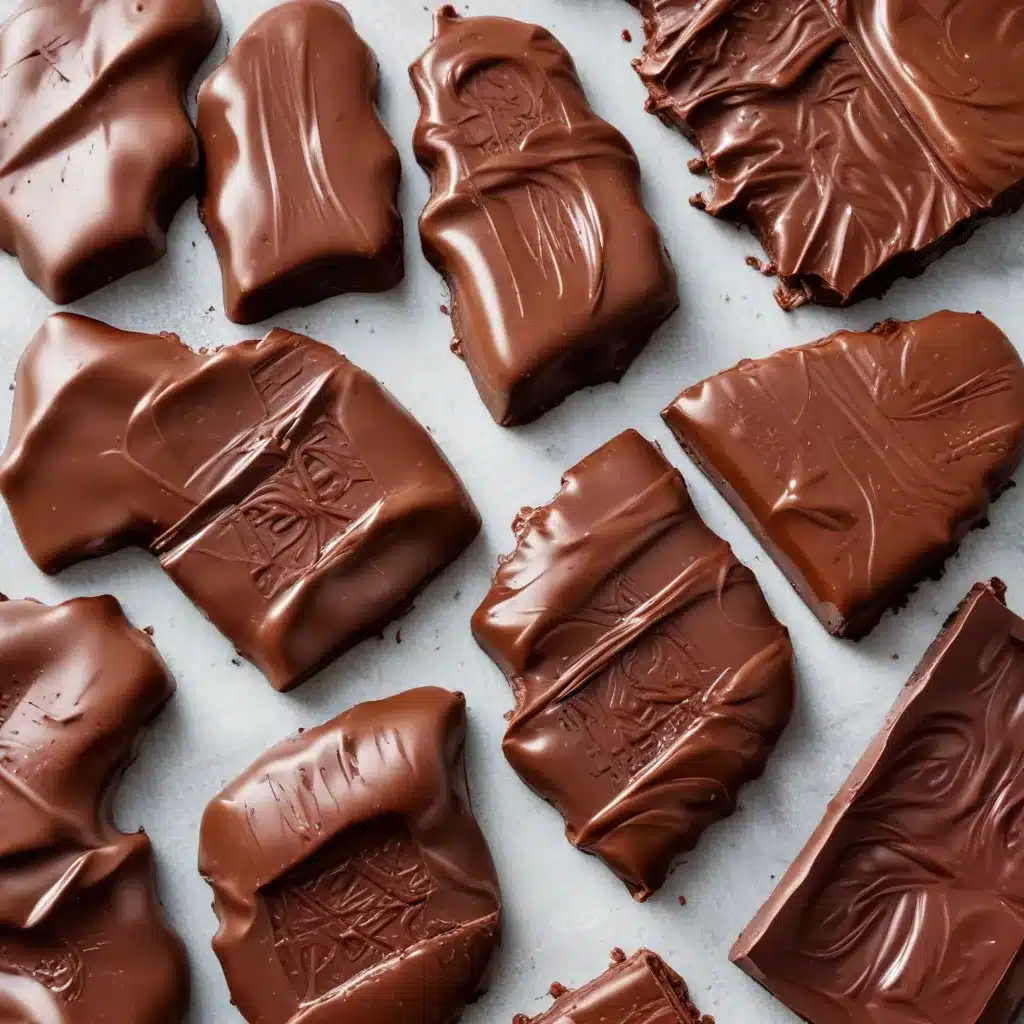
The Science Behind the Shine
Chocolate tempering is a crucial step in the chocolate-making process that can elevate your homemade treats to new heights. But what exactly is tempering, and why is it so important? In short, tempering refers to the method of heating and cooling chocolate in a precise way to stabilize its fats and sugars, resulting in that perfect, shiny finish.
Without tempering, your chocolate may become grainy, dull-looking, or even prone to melting at room temperature. But when you take the time to properly temper your chocolate, you’ll be rewarded with a smooth and glossy appearance, a satisfying snap, and a longer shelf life. Mastering the art of tempering is an absolute must for any serious home chef or confectioner looking to create high-quality chocolate desserts.
The Crystal Science of Chocolate
The science behind tempering chocolate lies in the crystal structure of cocoa butter. Cocoa butter can form several different types of crystals, depending on how the chocolate is cooled. The key is to encourage the formation of the desirable beta crystals while preventing the unstable alpha crystals from taking hold.
Chocolate Crystal Structures:
– Alpha Crystals: Unstable and prone to melting at room temperature
– Beta Crystals: Stable, providing that perfect snap and glossy finish
By carefully controlling the temperature and agitating the chocolate during the cooling process, a skilled chocolatier can ensure the beta crystals take precedence. This allows the chocolate to set up properly, creating the optimal texture and flavor profile.
Tempering Techniques Revealed
There are several techniques you can use to temper chocolate, each with its own benefits. Let’s explore the most popular methods:
Seeding Method
The seeding method is a foolproof way to achieve perfectly tempered chocolate. Here’s how it works:
- Melt the chocolate to 115°F (46°C) for milk or semisweet, or 120°F (49°C) for dark chocolate.
- Remove the chocolate from the heat and stir in small pieces of pre-tempered chocolate (known as “seed” chocolate) until the temperature drops to 84°F (29°C).
- Reheat the chocolate, stirring constantly, until it reaches 88-91°F (31-33°C).
- The chocolate is now tempered and ready for use.
The seeding method ensures a smooth, glossy finish and a satisfying snap every time.
Tabling Method
The tabling method offers a fun and engaging way to temper chocolate. Follow these steps:
- Melt the chocolate to the appropriate temperature range, just as in the seeding method.
- Pour about two-thirds of the melted chocolate onto a clean, cool marble or granite surface, creating a thin layer.
- Using a bench scraper or spatula, continually fold and spread the chocolate, allowing it to cool to 80-84°F (27-29°C).
- Once the chocolate reaches the desired temperature, return it to the remaining one-third of melted chocolate and stir to combine.
- The chocolate is now tempered and ready for use.
The tabling method allows you to visually monitor the chocolate’s temperature and texture as it cools, giving you greater control over the tempering process.
Microwave Method
For a quick and easy tempering option, the microwave method is a great choice:
- Chop the chocolate into small pieces and place them in a microwave-safe bowl.
- Microwave the chocolate in 15-30 second bursts, stirring between each interval, until the chocolate is melted and smooth.
- Once the chocolate reaches 115-120°F (46-49°C), remove it from the microwave and continue stirring until the temperature drops to 84°F (29°C).
- Reheat the chocolate, stirring constantly, until it reaches 88-91°F (31-33°C).
- The chocolate is now tempered and ready for use.
The microwave method requires a bit more vigilance to prevent overheating, but it can be a convenient option for smaller batches of chocolate.
Common Tempering Pitfalls and How to Avoid Them
Tempering chocolate can be a delicate process, but with a bit of practice and the right techniques, you can avoid common pitfalls and achieve consistent results. Let’s explore some of the most common issues and how to troubleshoot them:
Overheating: Chocolate can break down if it’s heated above 145°F (62°C), resulting in a thick, grainy texture. To prevent this, always use a digital thermometer to monitor the temperature and avoid sudden spikes in heat.
Inadequate Stirring: Proper stirring is crucial for forming stable cocoa butter crystals. If you rush this step, you may end up with uneven tempering and unstable crystals, leading to dull spots or even seized chocolate. Take your time and stir continuously, scraping down the sides of the bowl to ensure even distribution.
Humidity: Even a small amount of moisture in the air can cause chocolate to seize up. Always work in a dry environment and ensure that all your tools are completely dry before you start. If you do encounter slightly seized chocolate, you can try melting in some butter or oil and stirring vigorously to salvage it.
By understanding and avoiding these common pitfalls, you’ll be well on your way to achieving perfectly tempered chocolate every time.
Putting It All Together
Tempering chocolate may seem like a complex process, but with the right techniques and a bit of patience, it’s a skill that anyone can master. Whether you’re using the seeding method, the tabling technique, or the microwave approach, the key is to pay close attention to temperature and agitation throughout the process.
Once you’ve got the hang of tempering, the possibilities are endless. Imagine the delectable desserts, smooth coatings, and stunning presentations you can create with your newfound expertise. Embrace the art of tempering, and let your chocolate creations shine.
For more baking tips, recipes, and culinary inspiration, be sure to visit KitchenWarrior.co.uk. Happy tempering!


